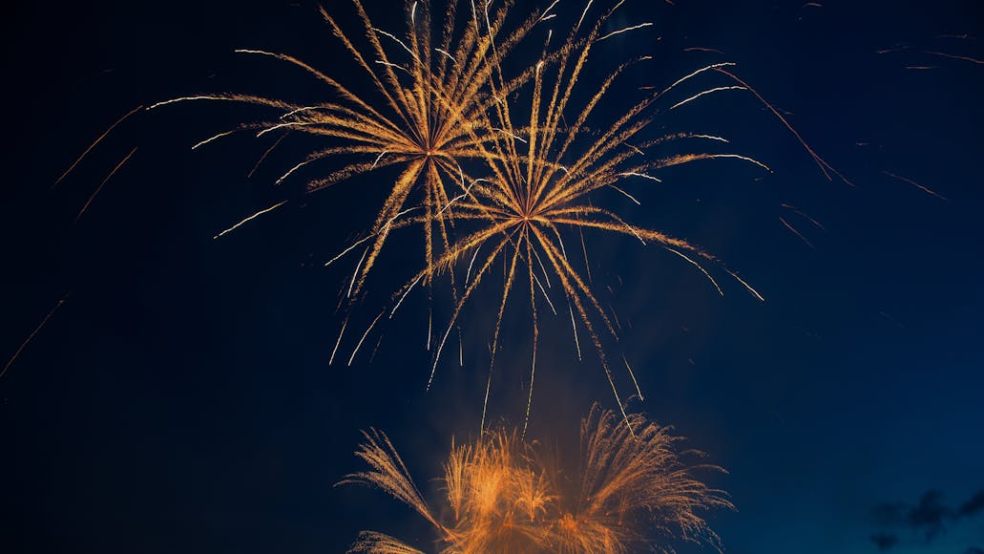
6 Mistakes People Make When Using Fireworks — and How to Avoid Them
There’s nothing quite like the thrill of fireworks lighting up the sky—whether it’s Bonfire Night, New Year’s Eve, or a big summer celebration. But behind all the sparkle and noise, there’s a serious side to fireworks too. Every year, accidents happen, and more often than not, they’re the result of simple mistakes that could have been easily avoided.
If you’re planning a fireworks display, here are five common missteps people make—and how you can stay safe while still enjoying the show.
1. Not Reading the Instructions
The Mistake:
Many people assume all fireworks work the same way. They light the fuse, step back, and hope for the best. But each firework has its own quirks—how it should be placed, how long the fuse burns, and what to do (or not do) before lighting it.
How to Avoid It:
Take a minute to read the instructions on every firework before lighting it. It might feel like overkill, but knowing exactly what to expect helps you stay in control. Read them in daylight before the display starts—trying to read fine print in the dark with a torch isn’t ideal. Shop full-scale firework bundles here.
2. Standing Too Close
The Mistake:
It’s tempting to watch from up close, especially if you're setting things off. But being too near puts you in the danger zone if something goes wrong—like if a firework tips over or malfunctions.
How to Avoid It:
Set up a clearly marked launch zone, and stay at a safe distance once the fuse is lit. For most fireworks, standing at least 15–20 metres away is advised. Make sure spectators are well back too. It’s better to watch from a little further and stay safe.
3. Relighting a Dud
The Mistake:
You light a firework, and… nothing happens. It’s tempting to go over, poke at it, or try to relight it. But that could lead to a delayed ignition—right as you lean in.
How to Avoid It:
Never attempt to relight a dud. Wait at least 15–20 minutes, then soak it in water before throwing it away. It’s frustrating to have one not go off, but your safety isn’t worth the risk.
4. Using Fireworks in the Wrong Location
The Mistake:
Lighting fireworks in small gardens, near dry grass, under trees, or close to buildings is asking for trouble. Even a small misfire can quickly escalate into something dangerous.
How to Avoid It:
Always choose a wide, open space—preferably a flat, non-flammable surface. Check your surroundings before lighting anything: no overhanging branches, fences, or sheds nearby. And never use fireworks indoors or in windy conditions.
5. Forgetting Safety Gear and Precautions
The Mistake:
People often skip the safety basics, thinking they’re only needed for big public displays. No gloves, no eye protection, no water bucket—just a box of fireworks and a lighter.
How to Avoid It:
Even small displays need big safety habits. Wear gloves and safety glasses if possible. Keep a bucket of water, sand, or a hose close by. Use a long-reach lighter to stay at a safe distance from the fuse. These simple steps add an extra layer of protection and peace of mind.
6. Not Telling the Neighbours
It’s not just handling fireworks that you have to be careful about. You also have to consider your neighbours in the equation. If you don’t keep them informed, you could get some complaints that could put an end to your happy evening and display. Of course, people can be alerted by sudden bangs and they might not be happy with your actions if they have young children and pets. Therefore, it’s recommended that you always inform your neighbours of your plans. They’re more likely to be accommodating when you’ve made the effort to tell them. There are always compromises you can make if they do raise issues, such as getting silent fireworks.
Final Thoughts
Fireworks are meant to be fun—but they’re also powerful and potentially dangerous if handled carelessly. By avoiding these five common mistakes and following a few basic safety rules, you’ll enjoy the night with confidence and keep everyone around you safe too.
Plan ahead, stay calm, and always respect what you’re working with. The more prepared you are, the better the experience will be—for you and your whole crowd.

















